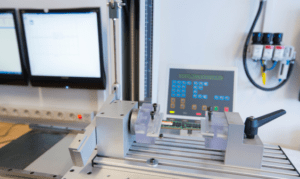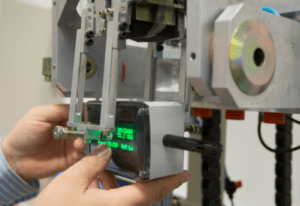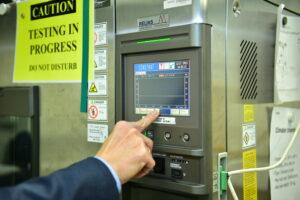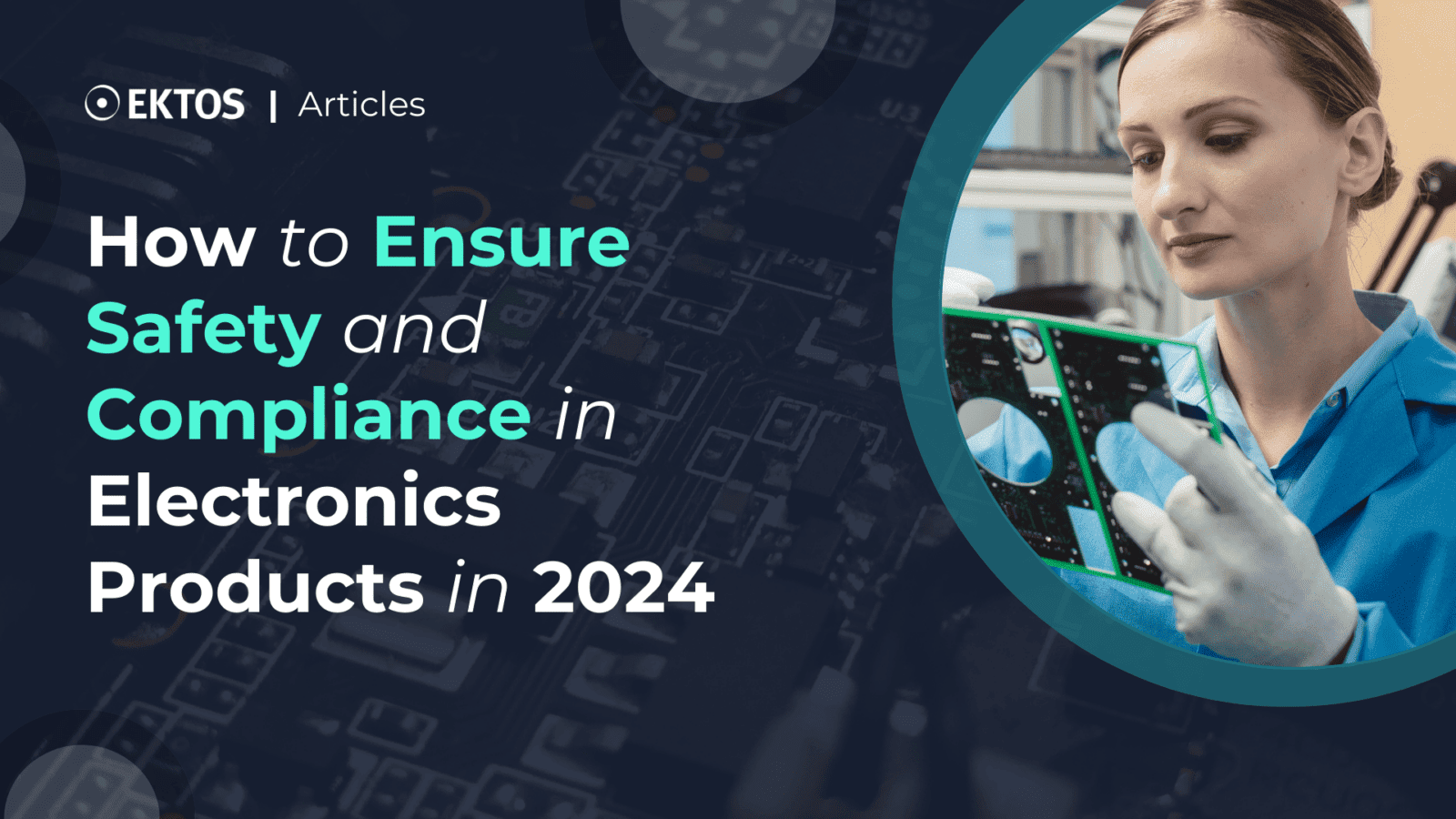How To Ensure Safety and Compliance in Electronic Products in 2024
February 12, 2024
In today’s technologically driven world, electronics products have become an integral part of our daily lives across industries. From smartphones and laptops to medical devices and automotive electronics, the demand for these innovative products is ever-increasing. With the demands comes the responsibility of electronics vendors to ensure safety and compliance in electronic products for users.
This article explores 11 essential ways for electronic vendors across industries to ensure their products do not pose any risk to their customers’ well-being or fall short of regulatory standards. In doing so, they will be better positioned to build trust, enhance customer satisfaction, and mitigate risks associated with non-compliance. Ultimately, they will instill confidence in consumers in 2024 and beyond.
1. Understand The Role of Safety and Compliance in Electronics Industry
Safety and compliance should be at the forefront of every vendor’s mind for their electronics products. Despite the drive to constantly push boundaries of innovation and technological advancements, prioritizing the safety of users is crucial to ensure product functionality, and minimizes the risk of accidents, injuries, or even fatalities. Moreover, compliance with regulations and industry standards is not just a legal obligation but also a moral responsibility. It demonstrates a commitment to delivering products that meet the highest quality and safety standards.
In addition, the potential consequences of non-compliance can be severe and far-reaching. The legal repercussions can include hefty fines, product recalls, and even costly lawsuits and reputation damage for vendors. There could also be serious harm to end-users such as electrical hazards, fire hazards, or toxic material exposure resulting in injuries, negative publicity, and loss of customer trust. Understanding and adhering to safety and compliance in electronics products should be a top priority for every vendor.
2. Understand Global and Industry-specific Regulations and Standards
Navigating the maze of global regulations can be overwhelming for electronic vendors. Nevertheless, compliance is not something they can afford to ignore. Understanding the regulations ensure they are aware of the minimum safety requirements their products must meet worldwide.
These regulations address various aspects of electronics safety, such as electromagnetic emissions, product labeling, and electrical safety. Some widely recognized regulations include the CE Marking in Europe, the Federal Communications Commission (FCC) standards in the United States, and the International Electrotechnical Commission (IEC) standards. Vendors must familiarize themselves with the specific requirements of each region to avoid costly mistakes and ensure their products can be legally sold in different markets.
In addition to global regulations, there are specific rules and compliance guidelines for electronics products in different industries. For instance, medical electronics must adhere to strict standards to ensure patient safety, while automotive electronics need to meet rigorous durability and performance criteria.
Understanding these industry-specific compliance requirements is vital for vendors operating in niche markets. It enables you to tailor your design and manufacturing processes to meet the unique demands of different sectors, providing your customers with reliable and compliant products that meet their specific needs.
3. Incorporate Safety and Compliance in the Product Design and Development
Safety should be an integral part of the product design and development process. By considering potential hazards and risks upfront, vendors can proactively address safety concerns. This can be achieved by conducting thorough risk assessments, identifying potential failure points, and implementing appropriate mitigating measures.
Whether it’s designing circuitry to prevent electrical shocks or incorporating fail-safe mechanisms, prioritizing safety at the design stage reduces the likelihood of accidents and ensures compliance with safety regulations.
It does not end there. Integrating safety measures throughout the entire product development cycle is the way to go. Right from sourcing high-quality components that meet safety standards to conducting rigorous testing and validation procedures up to implementing robust quality control processes.
A comprehensive way to achieve this is by implementing Design for Safety (DFS) principles into product development. Consider factors like user ergonomics, proper insulation, and foolproof safety mechanisms that ensure overall safety and more reliable devices.
Additionally, collaborating with regulatory bodies and keeping up with emerging safety technologies and industry best practices allows vendors to stay ahead of the curve. By continually improving safety features and addressing potential vulnerabilities, vendors demonstrate their commitment to providing reliable and safe electronics products to their customers.

4. Establish Robust Quality Control
Establishing Robust Quality Control Processes goes a long way to ensuring your products are not falling apart after a few uses or pose a fire hazard. From raw material inspections to thorough manufacturing checks, a meticulous quality control system helps vendors catch any potential issues before they become a problem.
Set up precise quality standards for each component and stage of the manufacturing process right from materials sourcing, assembly, testing, and packaging. Clear standards serve as a reference point for assessing product quality. This could be taken a step further with investment in advanced technologies such as AI-powered inspection systems, automated assembly lines, and IoT-enabled monitoring for real-time quality control. These technologies enhance precision, efficiency, and reliability in identifying and rectifying defects.
To sustain quality control, a culture of continuous improvement would be helpful. Activities such as collecting feedback from customers, analyzing returns and defects, and implementing corrective actions ensure quality is maintained in the long term. The processes would need to be regularly reviewed and updated to adapt to technological advancements and market demands.
5. Implement Rigorous Testing
Aside from the internal quality control measures, electronics vendors across industries must subject their products to rigorous testing and certification. This ensures that their devices are safe for users to operate and won’t cause any unintended or harmful side effects. They must familiarize themselves with the regulatory frameworks, safety standards, and industry-specific guidelines.
The evaluation covers safety, Electromagnetic Compatibility (EMC), Radiofrequency (RF) compliance, environmental adherence, and energy efficiency. Products passing these tests receive certification marks like CE or FCC, signifying compliance with industry guidelines. Not only does this give your customers confidence in your product, but it also keeps you out of regulatory issues.

6. Partner with Reliable and Compliant Suppliers
The quality and practices of your suppliers can have a direct impact on the safety and compliance of your products. Before entering into partnerships, it’s crucial to evaluate your suppliers’ compliance and quality assurance practices. This requires establishing stringent criteria for supplier selection and thorough due diligence to verify their certifications and track records. In doing so, vendors can know if they adhere to industry standards, regulations, and certifications. Look for suppliers who have a proven track record of meeting safety and compliance requirements.
Once suppliers are selected, it’s important to continuously monitor and audit their practices to ensure ongoing compliance of your supply chain. Regular audits and quality assurance checks would help maintain supplier accountability and minimize the risk of non-compliant components or materials.
Furthermore, establishing transparency and accountability within vendors’ supply chain is equally essential for maintaining compliance. With robust supply chain management systems, vendors can track the origin of components, ensure proper documentation, and verify compliance at every stage.
Regular communication and collaboration with suppliers help address any potential issues promptly and prevent non-compliant products from reaching end-users. By fostering a transparent and accountable supply chain, vendors can maintain the highest standards of safety and compliance throughout the product lifecycle.
7. Provide Comprehensive Documentation and Labeling
Transparency and consumer confidence are essential components of ensuring the safety and compliance of electronic products. Effective documentation and clear labeling play a significant role in achieving these objectives.
The product documentation must be comprehensive with detailed information about the product’s design, manufacturing, and safety features. It should also outline any potential hazards or risks associated with the product, along with instructions for safe use and maintenance. By providing this documentation, vendors empower consumers to make informed decisions while demonstrating their commitment to safety and compliance.
In addition to comprehensive documentation, clear and accurate labeling is crucial for electronics vendors. Labels should provide essential information such as product model numbers, safety warnings, and certifications. They should be designed in a way that is easy to understand and prominently displayed on the product. Clear labeling not only helps consumers navigate the product safely but also facilitates compliance with regulatory requirements.
8. Provide Workforce Training on Safety and Regulatory Requirements
Employees play a crucial role in understanding and implementing regulations, standards, and best practices related to electronics compliance. They are responsible for interpreting complex requirements and conducting thorough testing to ensure products meet regulatory standards. Employees with expertise in compliance help to mitigate risks, avoid costly penalties, and maintain the reputation and trust of the company among customers and regulatory authorities. Therefore, investing in employee training and skill development is essential.
The training program should educate employees about relevant regulatory requirements and industry best practices like safety standards, compliance protocols, and quality control processes. By keeping the workforce informed, they can identify defects, troubleshoot issues, and adhere to quality standards effectively.
Beyond training, vendors should promote a culture of safety, compliance, and open communication throughout their organization. Employees who demonstrate exemplary commitment to these values should be recognized and rewarded. This helps employees to feel comfortable reporting any potential issues or concerns that can be addressed before they lead to crises.

9. Establish Post-Market Surveillance and Feedback Mechanisms
Safety doesn’t end once a product hits the market. Post-market surveillance and feedback mechanisms help electronics vendors monitor the performance and safety of their products while out in the marketplace. This can be achieved by establishing mechanisms for monitoring their products’ safety and performance through regular inspections, collecting feedback from users, and analyzing any reported incidents.
This should then be complemented with effective reporting and response systems. Such a combination ensures a proactive way of identifying and promptly handling any safety risks to ensure products remain safe throughout their lifespan. In practice, customers and users must be encouraged to report any issues they encounter and ensure that there is a clear process for escalation and resolution. A timely response to reported incidents demonstrates vendors’ commitment to user safety and satisfaction.
10. Empower Users for Safe and Responsible Product Use with Manuals and Instructions
To ensure users can use products appropriately and safely, vendors must provide clear and comprehensive user manuals and instructions. The User manuals should be written in a language that their customer can understand. By avoiding technical jargon and complicated explanations, vendors would help users feel confident using their new electronic gadgets without apprehension or confusion.
Vendors should also actively promote safe usage and maintenance practices. By providing educational materials, online resources, and tutorials, vendors can empower users to make informed decisions about their electronic devices. This includes teaching them how to clean, store, and maintain their products properly, ensuring longevity and safety.

11. Anticipate and Address Emerging Safety Issues caused by advanced technologies
The world of technology is constantly evolving, new safety challenges may arise. With emerging technologies like AI, IoT, and virtual reality becoming more prevalent, electronics vendors must anticipate and address the safety implications that come with these advancements.
By staying informed about technological advances and potential safety risks, vendors can adapt and innovate to create products that are both cutting-edge and safe. Vendors also need to tackle the ever-changing landscape of regulations and compliance. New laws and standards are constantly being introduced, and vendors must stay on top of these changes to ensure their products meet the requirements.
Vendors must be prepared to navigate the maze of regulations and work closely with regulatory bodies to ensure their innovative products are safe, compliant, and user-friendly in the years to come.
Conclusion
As the electronics industry continues to innovate and evolve, ensuring the safety and compliance of electronics products remains paramount. By following these essential strategies, electronics vendors can navigate the complex regulatory landscape to design and develop products with safety in mind. In prioritizing safety, vendors not only protect consumers but also enhance their reputation and credibility. As electronics vendors adopt these best practices, they can pave the way for a future where electronic products are consistently safe, compliant, and trustworthy for users across industries.
FAQ
1. Why is safety and compliance important in the electronics industry?
Safety and compliance are crucial in the electronics industry to protect the well-being of users and ensure product quality. Non-compliance can have severe consequences, including safety hazards, legal penalties, damage to brand reputation, and loss of consumer trust.
2. How can electronics vendors ensure compliance across their supply chain?
Electronics vendors can ensure compliance across their supply chain by carefully selecting reliable and compliant suppliers, establishing transparent communication and accountability mechanisms, conducting regular audits, and fostering a culture of compliance within the supply chain.
3. What are the key steps in incorporating safety into product design and development?
Incorporating safety into product design and development involves identifying potential hazards and risks, conducting thorough risk assessments, implementing safety measures at the design stage, and continuously testing and refining the product to ensure optimal safety performance.
4. How can electronics vendors stay ahead of emerging safety issues and regulatory challenges?
To stay ahead of emerging safety issues and regulatory challenges, electronics vendors should closely monitor industry trends, actively participate in standard-setting bodies and industry associations, invest in research and development, maintain open communication channels with regulatory authorities, and continuously update their knowledge and practices to align with evolving regulations and technologies.
